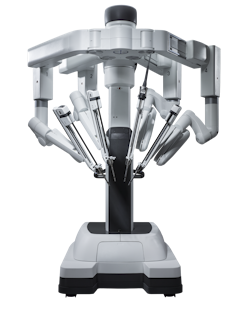
Rebecca Randell, University of Leeds
A study has revealed that robotic surgery was involved in 144 deaths and 1,391 injuries in the US during a 14-year period. While this may seem a cause for concern, considering there were 1.7m operations carried out during the same period, this is very few indeed.
Of course there is always the possibility of complications occurring in surgery, with or without robot involvement. But as robotic procedures become more common, health service users have a reason to wonder what these machines do and how complications can occur, so that we can try to prevent them in the future.
First, are robots really conducting surgical procedures? A more accurate term is robot-assisted surgery. This is a form of keyhole surgery, where the surgeon performs operations using small incisions, through which a fibre-optic camera and instruments pass. Keyhole surgery is better for patients as it is less invasive, but can be difficult for surgeons as the long instruments can be awkward to handle.
In robot-assisted surgery, the robot holds the instruments while the surgeon sits at a console, remotely controlling the robot’s arms. In these cases, the surgeon has more precise control than without the robot, because with extra robotic arms to assist the surgeon can control the camera and an additional instrument at the same time, whereas otherwise an assistant surgeon would be needed.

While there are robotic devices that cater to specific needs such as assisting surgeons with catheter or vascular control, inserting spinal implants or joint replacement procedures, there are few multi-purpose devices. The market leading device is the Da Vinci, manufactured by Intuitive Surgical, sales of which have rapidly risen despite the latest model’s £1.7m price tag and annual maintenance costs of £150,000. Between 2007 and 2011, the number of Da Vinci robots in use in the US increased from 800 to 1,400, while the number worldwide reached 2,300 in 2011. There are around 50 in the UK.
Robot-assisted surgery is primarily used in urology, but is expanding into gynaecology, ear, nose and throat, colorectal, cardiology, and paediatric surgery. NHS England is currently reviewing the evidence for robot-assisted surgery in order to develop rules for where and for what operations robot-assisted surgery can be used.
Two well-designed and conducted studies comparing keyhole and robot-assisted surgery for treatment of prostate cancer found that robot-assisted surgery offered quality-of-life benefits for patients, in terms of higher rates of continence and sexual function. However there is a lack of high-quality studies for other types of surgery.
Robots not always best team players
While studies of robot-assisted surgery tend to focus on the role of the surgeon, the surgeon does not work alone – safe and effective surgery depends on a team. What is known as the surgeon’s first assistant is often a trainee surgeon, or a nurse or operating practitioner who has undertaken specialist training. There is a scrub practitioner, responsible for passing instruments as needed, who is in turn supported by one or more circulator nurses, who gather additional instruments and supplies. There is also the anaesthetist, who will often be supported by a trainee or an operating department practitioner.
Even with robot assistants this team is still essential – what has changed is how they are arranged around the operating theatre. The surgeon is normally sat a couple of metres away from the patient and the rest of the team at the console. This is really important because the collaboration on which safe and effective surgery depends is affected by this arrangement.
When we have interviewed surgical teams about their experience of robot-assisted surgery, they described difficulties in hearing the surgeon’s instructions. It’s sometimes unclear who the surgeon is speaking to, because when the surgeon’s head is in the console, there’s no opportunity to use non-verbal communication such as gestures and eye contact. This results in repetition of instructions and reduced coordination, potentially leading to a longer operation. It becomes harder for the surgeon to guide the first assistant, so having an experienced first assistant is more important in robot-assisted surgery. The surgeon’s position at the console also affects their awareness of what is happening in the operating theatre. Theatre teams told us of having to quickly tell the surgeon to stop because the robot arms were going to hit the patient.
The theatre teams we spoke to had also developed strategies to overcome the problems they were experiencing. So alongside gathering more evidence on the just how effective robot-assisted surgery is, we need to develop a better understanding of what changes it introduces to the teamwork of surgery, and to assess how best surgeons and their teams can make changes that will improve the safety of robot-assisted surgery.
Rebecca Randell, Lecturer, University of Leeds
This article is republished from The Conversation under a Creative Commons license. Read the original article.

